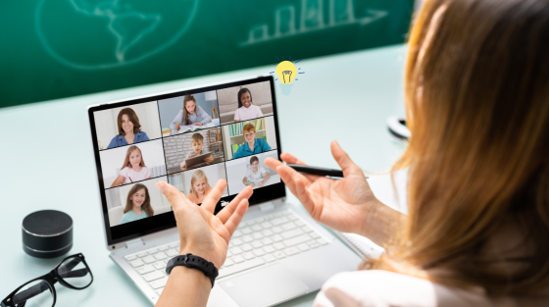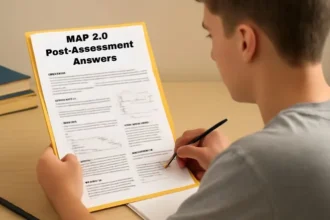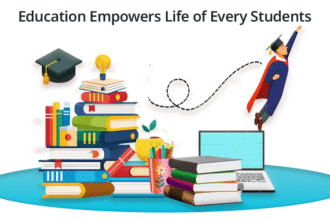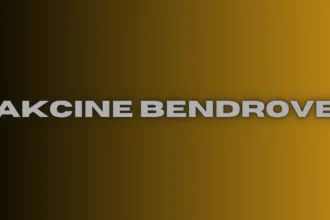Remember when learning was an adventure? For many elementary students today, school has become more of a chore than a journey of discovery. Research shows that students who engage with creative teaching methods are more likely to retain information long-term compared to those taught through traditional methods alone.
As educators and parents, we’re facing a critical challenge: how do we transform elementary education from something kids endure to something they eagerly anticipate? The disconnect between traditional teaching approaches and modern students’ learning needs has never been more apparent.
Many children struggle to connect with rigid teaching methods that don’t accommodate different learning styles or spark curiosity. This blog explores how creative teaching styles can revolutionize elementary tutoring and help our youngest learners rediscover the joy in education.
The Psychology Behind Enjoyable Elementary Learning
Understanding how young minds work is the first step toward creating engaging learning experiences. Children’s brains are wired differently than adults, with unique processing patterns that significantly impact how they absorb and retain information.
How Elementary Students’ Brains Process Information
Young learners thrive on connection and emotion. Their developing brains form stronger neural pathways when learning is paired with positive emotional experiences. This is why a child might forget a math formula taught through worksheets but remember one presented through an exciting game or story.
Elementary tutoring approaches that incorporate movement, color, and novelty take advantage of children’s natural curiosity and energy. Rather than fighting against their developmental stage, these methods harness it for deeper learning.
Breaking the Boredom Barrier in Elementary Tutoring
Boredom is one of the biggest challenges to effective online learning, especially for young students. Recognizing different learning styles, visual, auditory, kinesthetic, is crucial for any elementary school tutoring service hoping to keep students mentally present.
Skilled online tutors keep sessions dynamic by switching between activities that match each student’s preferred way of learning. This variety helps maintain focus and prevents the mental fatigue that often comes from sticking to a single type of task during virtual lessons.
This understanding of how children learn to implement specific teaching approaches is key to transforming elementary education into something children genuinely enjoy.
6 Creative Teaching Styles That Transform Elementary Tutoring Sessions
Now that we understand the psychology behind effective learning, let’s explore specific approaches that make elementary tutoring sessions come alive. These methods can be adapted by parents, teachers, and tutors alike.
1. Storytelling-Based Learning: Making Lessons Memorable
Children are naturally drawn to stories. When academic concepts are woven into narratives, they become instantly more engaging and memorable. Effective tutors transform math problems into adventures, science concepts into mysteries to solve, and historical events into dramatic tales. This approach connects abstract ideas to characters and emotions children can relate to, making information stick.
Even reluctant readers become engaged when they’re invited into a story world where learning feels like an adventure rather than a task.
2. Gamification: Turning Learning Challenges into Adventures
Games tap into children’s innate competitive spirit and desire for achievement. By transforming lessons into games with points, levels, and rewards, tutors make learning irresistible.
Effective engaging learning techniques might include math races, vocabulary bingo, or science exploration quests. Digital and non-digital options can be equally effective when thoughtfully designed.
The key is creating appropriate challenge levels, hard enough to be interesting but achievable enough to build confidence rather than frustration.
3. Arts-Integrated Learning: Beyond Just Crafts
Art isn’t just for art class. When integrated into academic subjects, artistic expression deepens understanding and makes lessons more enjoyable. Creative tutors use drawing to visualize math concepts, music to teach patterns and sequences, and drama to bring history and literature to life. These approaches engage multiple senses, strengthening memory pathways.
Movement and visualization techniques are particularly powerful for children who struggle with traditional teaching methods, offering alternative routes to understanding.
Moving from creative approaches to their customization for individual learning challenges offers a natural progression toward truly personalized education.
4. Addressing ADHD Through Movement and Engagement
For students with attention challenges, sitting still can be torture. Creative teaching styles that incorporate movement aren’t just more engaging, they’re essential for learning.
Effective strategies include standing work stations, exercise breaks between activities, and lessons that involve physical movement. Math problems solved while hopping, spelling practiced while throwing a ball, and science concepts demonstrated through role-play all harness rather than fight natural energy. Multi-sensory approaches keep attention focused by engaging multiple brain pathways simultaneously, making it easier to stay on task.
5. Making Math Magical for Struggling Students
Many children develop math anxiety early, creating barriers that can last a lifetime. Effective tutoring methods break this cycle by making math tangible and relevant.
Visualization techniques transform abstract concepts into concrete images. Kitchen experiments demonstrate fractions and measurement, while shopping scenarios make percentages and decimals meaningful. Games that build number sense, like dice games, card activities, and math-based board games, create low-pressure environments where students can practice skills without anxiety.
6. Turning Reading Struggles into Reading Adventures
Reading difficulties can affect every academic area if not addressed with sensitivity and creativity. Personalizing the reading experience is key to transforming reluctance into enthusiasm.
Creative tutors match reading material to individual interests, making the effort worthwhile from the student’s perspective. Multisensory phonics approaches incorporate movement, touch, and sound to strengthen letter-sound connections.
Reader’s theater and performance-based comprehension activities transform passive reading into active engagement, especially beneficial for reluctant readers. Success measurement in creative teaching extends beyond traditional metrics to encompass the whole child’s development.
Measuring Success Beyond Grades: The Impact of Creative Elementary Tutoring
Traditional assessment methods often miss the most important outcomes of creative teaching styles. Looking beyond test scores reveals the true impact of engaging learning techniques.
Signs Your Creative Teaching Approach Is Working
Behavioral indicators often show success before academic measures catch up. Increased enthusiasm, unprompted discussion of academic topics, and decreased resistance to learning activities all signal positive engagement.
Children who experience effective tutoring methods begin to show greater confidence, willingness to tackle challenges, and self-motivation to explore topics independently.
Long-term retention, the ability to recall and apply concepts weeks or months later, ultimately proves the effectiveness of creative approaches.
Building Transferable Skills Through Creative Learning
The most valuable outcomes of creative teaching extend far beyond specific subject knowledge. Problem-solving capabilities developed through open-ended projects transfer to real-world challenges.
Communication confidence builds through collaborative activities where students practice expressing ideas and listening to others. Executive function skills, planning, organizing, and self-monitoring, strengthen through self-directed projects with appropriate guidance.
These foundational skills prepare children not just for academic success but for life success.
| Traditional Teaching | Creative Teaching |
| Teacher-centered | Student-centered |
| Memorization focus | Understanding focus |
| Single learning path | Multiple approaches |
| Fixed pace | Adaptable timing |
| Worksheet-heavy | Experience-based |
| Anxiety-producing | Joy-inducing |
Making Learning a Lifelong Adventure
The journey through elementary education sets the stage for a lifetime relationship with learning. By embracing creative teaching styles and engaging learning techniques, we can transform education from a series of tasks to be completed into an adventure to be savored.
When children enjoy learning, they develop intrinsic motivation that carries them through challenges. The most valuable gift we can give young learners isn’t just knowledge, it’s the curiosity and confidence to pursue knowledge independently throughout their lives.
Remember that the most powerful learning moments often happen when education feels like play. By bringing creativity, movement, and joy into the learning process, we’re not just teaching subjects, we’re nurturing whole humans who approach challenges with enthusiasm rather than dread.
Common Questions About Creative Elementary Teaching
What’s the best approach for helping my easily distracted child?
For children who struggle with focus, try engaging learning techniques that involve movement and hands-on activities. Break lessons into 10-15 minute chunks, alternating between seated and active learning. Incorporate their interests into lessons whenever possible, if they love dinosaurs, use dinosaur counters for math or dinosaur-themed reading materials.
How do I know which creative teaching style will work for my child?
Pay attention to when your child seems most engaged in learning. Do they light up during stories? Do they remember concepts better when they can touch and manipulate objects? Try various creative teaching styles and observe the response. Most children benefit from a mix of approaches, with emphasis on their strongest learning channels.
Can creative teaching prepare my child for standardized tests?
Absolutely! Effective tutoring methods that focus on deep understanding actually prepare children better than rote memorization. Creative approaches build stronger neural connections, making retrieval easier during testing situations. Just be sure to occasionally practice test-specific formats so the testing environment itself isn’t unfamiliar.

















